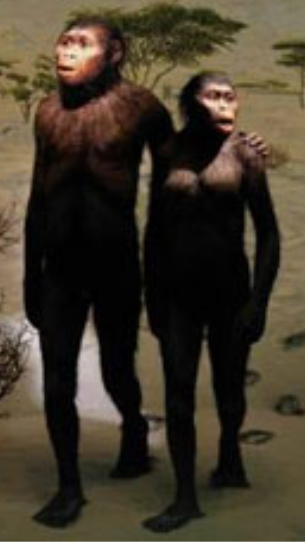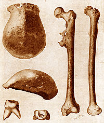I am researching information both for, and against evolution, and trust me - I am doing so objectively.
While I am still researching, I want to put this out, to hear the different views on it.
During my research I discovered that lately, just over the last decade or so, a lot of informations has been surfacing about fake fossils.
In fact it has now become common place for fossils sold at museums to be checked for genuineness.
I find this interesting.
Why now, is this happening?
Could it be that evidence as it always does, is now surfacing?
For example
Remember the dinosaur hoax - the one that was said to be put together using different bones?
It has recently been found out that it wasn't a hoax after all.
http://www.foxnews.com/science/2015/02/ ... ecies.html
That is quite interesting.
The fossils aren't the only things that were/are claimed to be fake.
There are the drawings, and pictures as well.
Right now, I am going through a very long document considered a case against some of Darwins picture illustrations.
But have you ever come across this one?
https://en.wikipedia.org/wiki/Ernst_Haeckel
Pictures from the past powerfully shape current views of the world. In books, television programs, and websites, new images appear alongside others that have survived from decades ago. Among the most famous are drawings of embryos by the Darwinist Ernst Haeckel in which humans and other vertebrates begin identical, then diverge toward their adult forms. But these icons of evolution are notorious, too: soon after their publication in 1868, a colleague alleged fraud, and Haeckel’s many enemies have repeated the charge ever since. His embryos nevertheless became a textbook staple until, in 1997, a biologist accused him again, and creationist advocates of intelligent design forced his figures out. How could the most controversial pictures in the history of science have become some of the most widely seen?
https://en.wikipedia.org/wiki/File:Haec ... eks4-6.jpg
English: The pictures illustrate Ernst Haeckel's biogenetic law. In the beginning embryos of different species look remarkable similar, later different characteristics develop. The images initiated controversies and charges of fraud.
All of this lends to a possibility.
Consdering the fact that fossils can be faked, we must accept the fact that Darwin, and other scientists could have lied.
My question here, isn't whether he did lie or not, but rather, Does this not place evolutionists in the same position as the Christians they claim are believing in fables?
Consider:
Christians accept the Bible, as the word of God.
Here are just a few facts about the Bible.
With estimated total sales of over 5 billion copies, the Bible is widely considered to be the best-selling book of all time.
It has estimated annual sales of 100 million copies.
It has been a major influence on literature and history, especially in the West where the Gutenberg Bible was the first mass-printed book.
It was the first book ever printed using movable type.
https://en.wikipedia.org/wiki/Bible
Archaeological findings of the Dead Sea Scrolls, also called the Qumran Caves https://en.wikipedia.org/wiki/Dead_Sea_Scrolls
The evidence is there however, that the book we hold in our hand today (the Bible), contains information written centuries ago.
Atheist call the book fables - the reason I have yet to find out.
Maybe one of the reasons is that they have not seen God, or seen him write any book - whatever.
So they claim that Christians' belief in them and what they present is blind faith, and belief in stories.
However, is this not the case with those who accept the theory of evolution, where all they have to go by, is what scientists claim to be evidence?
By the way...
No one, to this day have seen them recreate the theories.
Any data they give you on species, is usually what already existed (at least what I have come across so far).
As regards other claims, all we have are pictures, and claimed fossils, which could have been edited.
So evolutionists are really believing what men claim - without any substantial proof of their claim.
How is this different to believing a book?
And what if Darwin, and others lied?
I'm just interested in you different opinions and thoughts, on the above.
Here is a nice short video of someone's opinion. Reasonable too.






